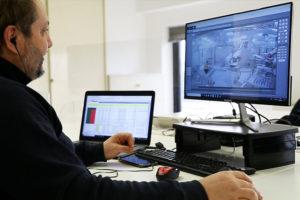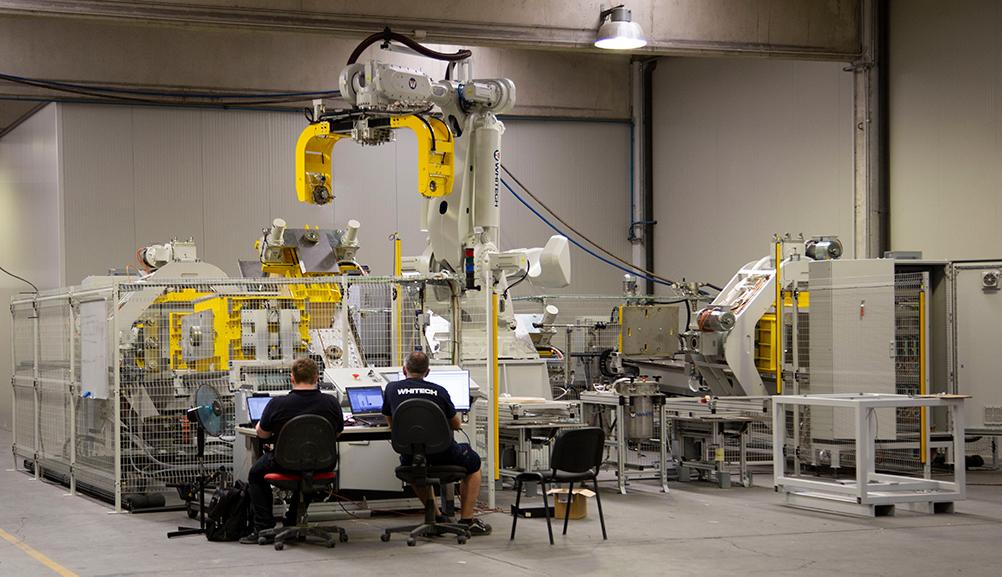Remote monitoring and programming solutions combined with predictive maintenance offer numerous advantages to companies that decide to adopt these systems: from reducing downtime, improving the performance of robotic cells to supporting business continuity.
Intertwined with the concepts of digital manufacturing, Industry 4.0 and IIoT, these systems give users and integrators control by combining the digital and physical worlds to save time and money, avoid accidents and increase productivity.
The interest in these technologies was high before the pandemic and subsequently it has greatly increased. Driven by distancing restrictions, government directives, and widespread labor shortages, many facilities have been forced to reconsider their maintenance and operations strategies.
In traditional automation configurations, having fewer people on site means less effective monitoring of systems performance and a reduced ability to quickly reprogram robots both during application changes and due to failures. Remote monitoring, remote scheduling and predictive maintenance solutions are designed to overcome challenges like these.
Unplanned downtime is estimated to cost industrial manufacturers $ 50 billion annually, with equipment failures accounting for 42% of this unplanned downtime. These outages cannot lead to unmanageable maintenance and repair costs.
Although our focus is on applications involving industrial robots, many of these systems can be used to monitor other machinery such as our industrial manipulators and other devices.
Here, we will look at some of the key benefits provided by systems designed to alleviate these issues:
Remote monitoring
Remote monitoring systems allow you to remotely monitor the performance of your robots. Typically, remote monitoring tools accessible via tablet, laptop or smartphone allow you to gather information on robot performance by tracking key performance indicators (KPIs) such as uptime / downtime and cycle time.
The KPIs provide historical and real-time information related to the robot’s performance. These powerful resources of information can be used to address changes within the robot cell / settings, with the aim of improving overall performance. This provides important business benefits such as increased productivity, better quality, reduced downtime and better business continuity.
Additionally, if a robot fails for any reason, remote monitoring systems can be used to send an immediate alert to personnel. Given the high cost of downtime for manufacturers, the ability to quickly identify sources of failure is a major benefit of remote monitoring solutions.
Remote programming
 Remote programming allows to program robots without having to be on site. These tools provide significant savings, eliminating the need for the physical presence of an experienced programmer every time a robot needs to be programmed. These systems also guarantee a quick response whenever there is a need to even modify an existing robot program.
Remote programming allows to program robots without having to be on site. These tools provide significant savings, eliminating the need for the physical presence of an experienced programmer every time a robot needs to be programmed. These systems also guarantee a quick response whenever there is a need to even modify an existing robot program.
Remote programming allows a single technician to monitor and program multiple robots from one location, simplifying operations and creating new business opportunities.
Predictive maintenance
Predictive maintenance solutions are designed to identify when a robot, machine or component fails. This is in stark contrast to reactive maintenance, which only occurs when a failure has already occurred.
The cost savings from predictive maintenance technologies are huge and include reduced downtime, better equipment planning, and lower total cost.
Recent research from the Deloitte Analytics Institute reveals that the ability to predict failures using advanced analytics will, on average, increase productivity by 25% and equipment uptime by up to 20%, reduce failures by 70%, and reduce cost of ownership. 25% maintenance.
Contact us to find out how to implement the evolution of your business!



